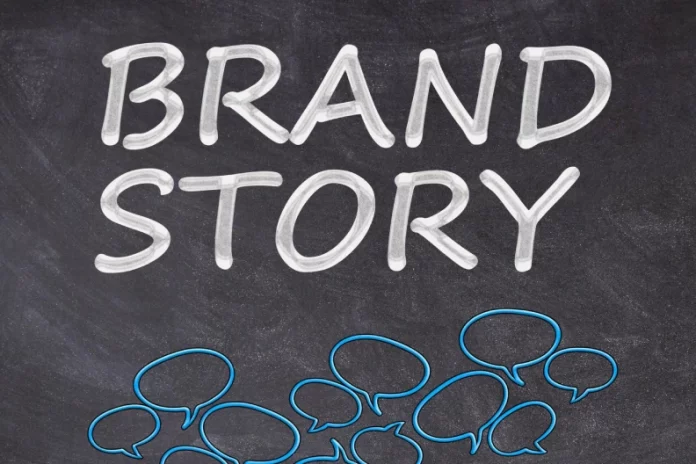A brand story is more than just a way to tell people about the company’s founders. It is a way to build real, emotional connections with the brand’s employees, as well as its advocates and ambassadors. More importantly, however, it helps create a connection with customers.
It is an outflow of emotions that help develop and foster trust, relatability, and eventually revenue. So what happens if a brand does not have a story that attracts people? It makes the business miss out on the most pivotal aspect of success, and that is “connection.”
Table of Contents
Brand Story- What it is

A brand’s story is simply the representation of the company’s founder. It shows who they are and what they stand for, as well as other important aspects of their personality. A brand story shows the company’s origins, its struggles, its mission, values, and what it stands for.
A brand story is a very first thing customers learn about a company, which is why it has to be compelling and not fanciful. It should be definitive and clear so that it instantly defines to the customers and employees the company’s true purpose.
But all too often, brands fail to convey emphatically. Their brand story falls short somewhere of the other, failing to spark the pivotal interest to establishing a firm connection.
You see, there’s a science that brands must understand to realize to achieve the power of storytelling fully. As humans, we have a natural tendency to understand a story and the emotions vested in them. If brand stories lack the necessary emotions, they will spark empathy and reliability in the audience.
Ask any communication agency, and they will tell you how clients love brand stories that will win the hearts of their customers. Below, we will outline some stellar tips for you that will help you develop a better brand story for your business.
1. Identify What the Brand is all about
The very first step in crafting your brand to the story is first to figure out who you are. Since you are the founder of your brand, the company reflects who you are. You can list down some questions and find suitable answers to them. These could include:
- What do I believe in as an organization?
- What will my brand tenets be that will last throughout my business tenure?
- What will my company’s voice stand for?
- What can I Offer?
- What can I offer compared to other brands?
Once you spend time answering these questions, you will have a better idea of what your brand story builds upon.
2. Envision
Realizing your self-identity and your brands is not enough. A business never comes to life until there is a vision and a mission behind it. Your brand story must speak of what you and your brand’s vision are about.
It is not merely enough to tell the audience. You must show them. Let your story reflect your brand’s good intentions and its struggle from scratch to make that vision come true. Refrain from getting too salesy in your description but rather let people see the person driving the brand.
This approach will help them envision the ethics and values the brand fosters. Let customers see your unique pitch through your vision statement. Although it is a short description, it is very important for precisely outlining your brand’s plans and values.
3. Let there be Some Conflict
We are all mystery lovers, and we like a bit of conflict in stories to keep us on edge. After all, why would we want to read something if it is flat and carries no exciting details? Hence, while we are not asking you to fabricate details, we encourage you to talk about the conflicts your business has faced.
Talk about the adversity you had to overcome before the brand could take shape. If you do not include an emotional journey or a bit of drama, the audience will not find your brand’s story very appealing. It will not attract them, let alone inspire or resonate with them.
4. Appeal to the Right Demographic
When you launch your brand, you surely know which demographic you will cater to. Hence, you will also have to decide who you’re telling your brand’s story. If you don’t know your target audience, you ultimately won’t know what kind of tone to adopt in your storytelling.
Hence, you must understand your target audience, envision their life’s situation, what problems they’re dealing with and how your solutions will help. Once you understand this, you will know just how to address your particular audience.
5. Include a Resolution with the Conflict
When you talk of adversity, also talk about the resolutions that helped you overcome them. Every story has a happy ending. In the case of a brand story, a happy ending means a solution that will help improve the lives of your customers significantly.
Start by outlining the status quo or the initial situation that brought the conflict to your notice. Then talk about how you struggled with that conflict and then describe the solution you had to find to resolve the problem actively.
Showing your audience how you successfully resolved a lifelong struggle can give them an emotional payoff. In the end, the audience will realize how your resolution is exactly what they need to to bring a problem to an end.
Final Thoughts
A brand story reveals the identity, goals, value, and mission behind a brand. It helps convey to the audience a brand’s uniqueness, effective solutions, and expertise in the industry. In the end, a great brand story inspires and helps people become lifelong customers!

